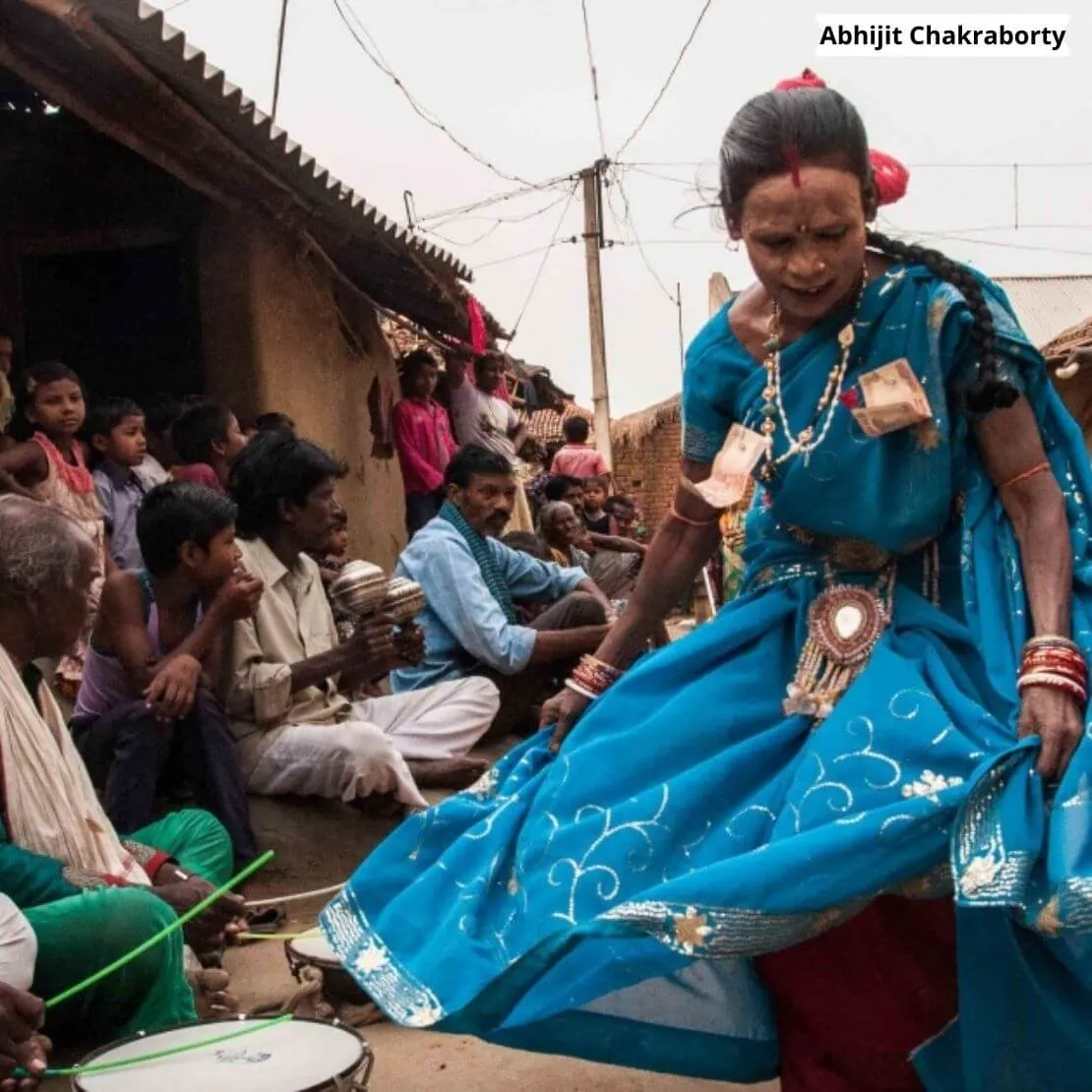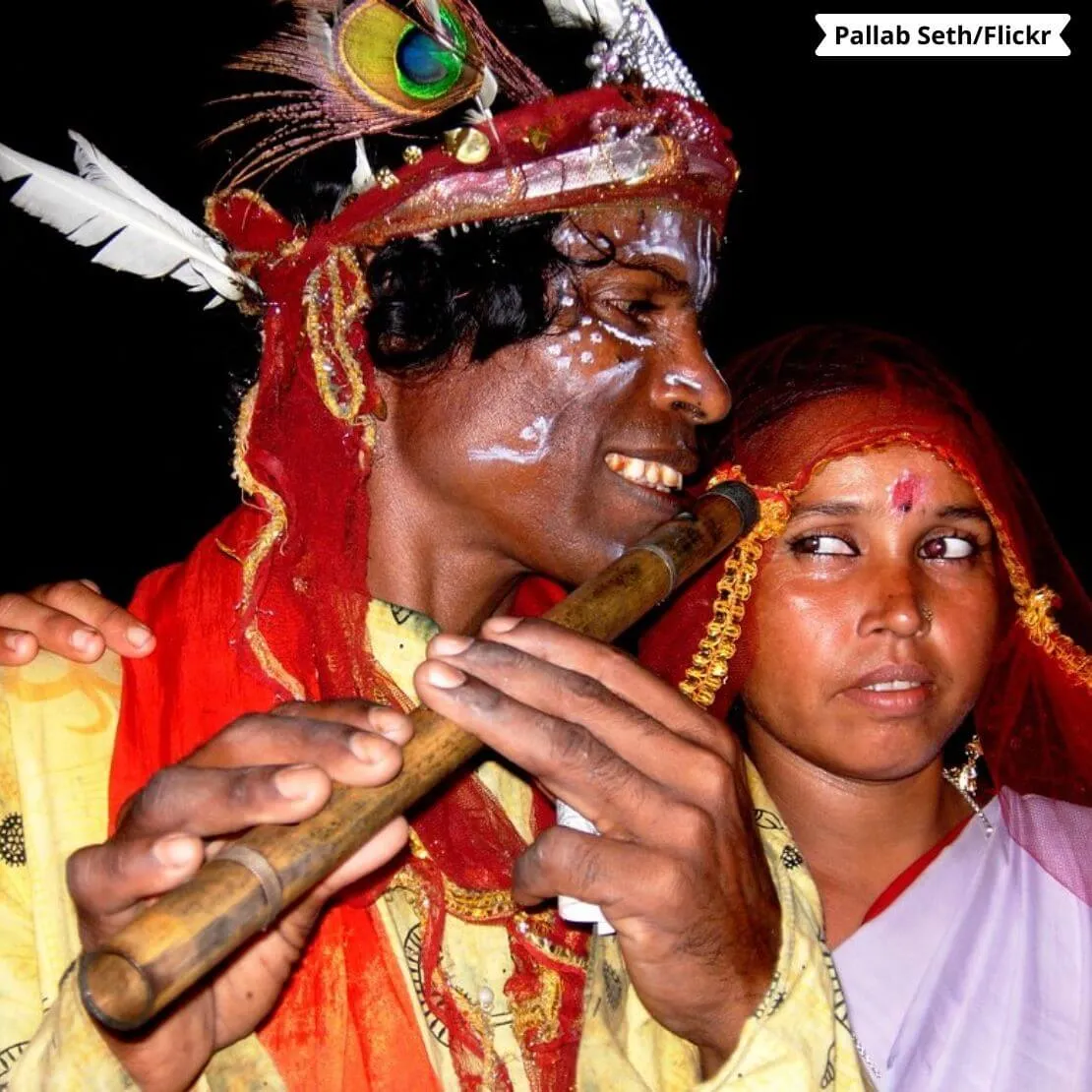Rural dancing girls of Purulia fight to exist
The Nachni community (dancing girls) inhabits the eastern part of Chhota Nagpur plateau, mainly Bengal, Bihar, and Jharkhand. In Bengal, they are scattered over districts like Purulia, Bankura, Bardhaman, and Birbhum. According to Mahasweta Devi, eminent author and social reformist, the origin of nachni tradition in Purulia can be traced to the feudal estate of Baghmundi under the zamindari of Ayodhya Prasad Singhdeo. From this, it is clear that the nachni tradition was an offshoot of the feudalistic pattern of the society.
In the ancient text of performative arts or Natyashastra, women were classified as controlled beings while men were classified based on knowledge and skill. In the nineteenth century, the 'female body' in performative arts was regarded as unprincipled. At the turn of nationalism in India, the societal image of the female body changed as liberal reformers considered it to be victimised. The nationalists thought it 'a repository of power, Kali - a figure of rage and strength'. Women in performative arts were not given the power to define themselves freely. Patriarchy, caste and class dominated the image of the female performer and women in general. The tag of cultural outcasts given to the nachnis has various historical, sociological, and cultural origins. But before we go further into that context, a detailed analysis of gender, sex, and body is necessary and its role in appropriating the male-female discrepancy.
Consumerised Body
Consumerism is primarily a western concept that became more highlighted during the late nineteenth century. Consumer culture creates a self that focuses on indulgence rather than denial. In consumerism, the probable customers are lured through advertisements to fulfil their desires or what Alexandra Howson calls “a complex manipulation of visual observation and emotional investment”. Such a desire is often a result of habitus. The word habitus means the dominant culture in which an individual is ingrained from a very early stage. The nachnis fall prey to the features of consumerism and habitus from a very young age. According to Pierre Bordieu, one of the characteristics of habitus is that it manipulates people into believing that indifference and inequality are natural and not culturally defined. The making of a Nachni starts when young girls are either married off by their family to lessen poverty or flee their homes to escape the inevitable fate. The rasik, an offshoot of the habitus shelters such girls and women, trains and transforms them into a nautch girl and earns money by exhibiting her body to the audience ( people belonging to the subaltern class). Through all this, her body resonates as something to be desired but not valued.

Desired Body
The female body is constantly under societal supervision and cultural transformation. This has several consequences - women are constantly under pressure to meet the standards of 'beauty'. Male values again determine such a definition of beauty. Failure to do so leads to a lack of self-worth, confidence and objectifying the self. Similarly, the nachnis are trained to appease the male gaze. Inability to meet the desires of the audience results in replacement. In the words of Alexandra Howson, "employment opportunities in a labour market favour work for women on the basis of appearance".
Does the sex of a body determine gender roles?
The body is like a container while sex is the physical or anatomical aspect; gender is the social representation arising from the categorisation of sex - i.e. male and female. Sex is often attributed to the body by society. So does this attributed sex determine specific gender roles?
The vulnerability of nachnis in the social structure arises from their profession. Bai nacher jhumur or jhumur shaliya is a particular type of jhumur song that revolves around themes like devotion, love, desire, separation.
Nachnis are required to exhibit erotic body movements and sensual facial expressions while performing such songs. The sovereignty of her body is compromised when men pin money in her saree tucked around the waist as a tribute to her entertaining demeanour. Her professional space is jeopardised when she submits herself at her Guru's feet- a patriarchal notion.
"Bidya buddhi kichu nai, ache gurur kripa tai
Rajobala guru podey pronam hey".
The above lines are from an introductory jhumur song, where the nachni accepts that she is not educated or intelligent enough. She only exists on this proscenium because of her guru.
This means she is accepting her subservient status and submitting herself to the dominant one.
Most of the jhumur songs are composed by men denying the creative space to the nachni. In this profession, there is no freedom given to her imagination. She is only at the helm of her rasik - who acts as a manager, a sexual partner and lives off her income. Yet, he is given the respect of an artist by society. Such respect arises from the attributed sex, and thereby he assumes a greater gender role.
As the entertainer of men, a nachni is regarded as uncontrolled, polluted and a threatening entity who is denied property, conjugal rights and even the right to be cremated (presently the situation has improved regarding cremation rights). Disowned by her paternal family she seeks refuge at her rasik's place who in turn refuses her any kind of security. Thus for a nachni, her attributed sex legitimised by the profession presumes a gender role solely based on serving. Postobala Devi, one of the most acclaimed nachnis of Purulia says "There was a time when we were treated as untouchables. People refused to drink water from the well used by nachnis. Cow dung mixed with water was sprayed to purify the places and objects touched by us".

The roots of degradation: from a historical perspective
What led to the degeneration of the nachnis? Is it feudalism that had patronised them, also rendered a patriarchal weightage?
In the wake of colonization in India, the European missionaries, military officials and diplomats recorded their experience of the performance of the local nautch girls in a very lucid manner. In their words, the nautch girls were soft, graceful and were artists in the true sense. Such a high position in the eyes of their patrons allowed these artists to perform during various prestigious functions. Leaping directly to the nineteenth century, Victorian values and idealism shaped by English education induced a sense of ‘polluted’ and ‘clean’ in the minds of the Nationalists. Liberal reformers tried to adjust to these new ideas of ‘modernism’. Interestingly, colonialism by then had started to spread its branches by using its soft power. In the meantime, the anti nautch campaign changed the societal image of the woman's body from confined to the one that needs to be emancipated. So it is clear that the definition of a woman's body continuously changes according to the needs of society. In contemporary times one thing has remained the same- either at the pedestal or mercy of men. Women are never identified as independent beings with natural sovereignty regarding their position in society.
India's nationalism had to be presented in a lucrative way. Thus the bureaucratic elites conforming to the Brahmanical norms started reconstructing the regional dance forms to make them 'pure'. Any emotion of self-expression was cut off and replaced by a dominant emotion, i.e. bhakti. 'God' was brought to the forefront to justify such actions. Throughout history, religion has been used as a tool to legalize certain patriarchal practices. One of the greatest examples of this is the emergence of prostitution in Thailand. The woman performer, though she was a mother, lover, and wife, was trained to reflect upon the traditional values of dance instead of channelising her true self. Indian classical dance forms became highly elitist, influenced by caste and class. Thus emerged the notion of Neoclassical and local dance forms.
The local dance performers had to appease a live audience, i.e. the patrons, and hence entertaining to hold their attention. The audience transcended the mental and physical space of the woman.She was still considered an artist. Now she is considered a cultural outcast by her own people and a group of women who need to be emancipated by the welfare organisations. But in contemporary times, such patronage has converted into common people, the government and some NGOs. Dancing to the beats of jhumur has become a necessity and not a choice for the nachnis. The title of artists has eroded over time.

Is the nachni jhumur fading into oblivion?
Nachni jhumur had been the lifeline of Purulia for several years. But now, it is eroding due to several factors. The advent of new forms of music and a glocalised atmosphere in the villages of Purulia is coming off as new threats to nachni jhumur.
The 48-year-old Postobala Devi Karmakar, who had seen all the ups and downs of this profession says, " till 2019 we were invited to perform in various festivals and fairs. But it’s a bleak situation now, mostly due to this pandemic. Duplicate songs are emerging in the market nowadays, cassettes of such songs are easily available, and nobody is interested in live performance".
Art remains alive because of the artists. Shilpi Bhata is a scheme of the State government through which nachnis are paid 1000 rupees/ month. It is not enough for a sustainable livelihood. Therefore nachnis are forced to take up small jobs as mill labourers or beg on the streets. Postobala Devi makes a legitimate demand when she says "There are instances of death of some aged nachnis due to abject poverty. I want to ask why nachnis above 60 years should not be entitled to a monthly pension?"
From rejection to acceptance, the nachnis have come a long way. It was a struggle for these women every single day. Presently the struggle is about keeping this art form alive. But how?
Postobala Devi eagerly says, " we can train young girls, even boys who will carry on and develop this art form with enthusiasm. An active research centre committed to the advancement of Nachni- jhumur is highly needed. The form of the performance of nachnis may be modified to some extent by incorporating theatrical elements without altering the essence. In this way, we can reach a larger mass".
Even when she is not economically stable, and her future is not secured, Postobala Devi's proclivity towards this profession and love for jhumur was evident when she sang...
Are Puruliar jhumur gane
Amar monta ke emon vabe tane.
Haye re jhumurer shur
Amar hiya kape durdur…..
(Purulia's Jhumur song
draws my mind in such a way.
Alas, the sweet melody of jhumur
makes my heart beat faster.)